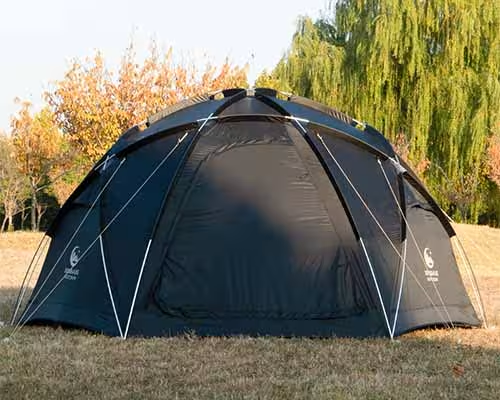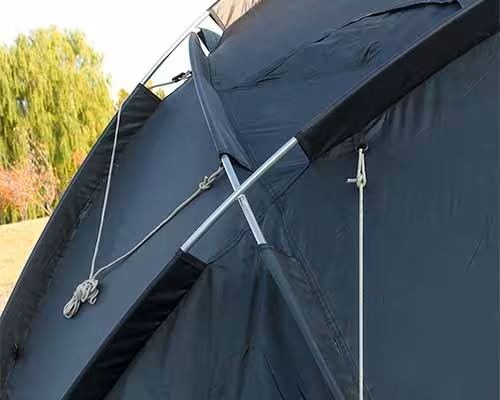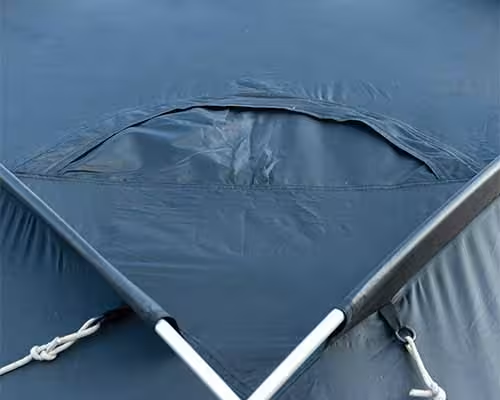Welcome to My Blog!
Before we dive into the content, I’d love for you to join me on my social media platforms where I share more insights, engage with the community, and post updates. Here’s how you can connect with me:
Facebook:https://www.facebook.com/profile.php?id=61569274896143
Now, let’s get started on our journey together. I hope you find the content here insightful, engaging, and valuable.
Table of Contents
Introduction

Camping waterproof tents are the backbone of any outdoor adventure, providing essential protection against rain, wind, and unpredictable weather. As we look ahead to 2025, advancements in tent design and materials have elevated the performance of these shelters, catering to a wide range of campers, from solo backpackers to large families. A reliable camping waterproof tent ensures comfort and safety, whether you’re pitching in a forest, on a mountain, or at a coastal campsite.
This comprehensive guide explores the best camping waterproof tents for 2025, focusing on their features, construction, and suitability for various camping scenarios. We’ll also highlight the expertise of Shandong Xingyue, a leading manufacturer whose product line includes inflatable tents, ultralight mountaineering tents, tunnel tents, hotel tents, aluminum pole tents, and other outdoor gear. With their OEM/ODM services, Shandong Xingyue offers customized solutions, from material selection and color schemes to branding and packaging, ensuring camping waterproof tents meet specific customer needs.
The Importance of Waterproofing in Camping Tents
Waterproofing is a non-negotiable feature for camping waterproof tents, as it determines their ability to withstand rain, snow, and moisture. High-quality tents use advanced fabrics like polyester or nylon coated with polyurethane (PU) or silicone, achieving hydrostatic head (HH) ratings of 3,000 mm or higher for rainflies and 5,000 mm for floors. These ratings ensure protection against heavy downpours and wet ground conditions. Seam-sealed stitching, full-coverage rainflies, and bathtub-style floors further enhance water resistance, preventing leaks even in challenging environments. Shandong Xingyue’s commitment to durable, waterproof materials ensures their camping waterproof tents deliver reliable performance, with customizable options for clients seeking tailored solutions for specific climates or camping styles.
Key Features of High-Quality Camping Waterproof Tents
When evaluating camping waterproof tents, several features stand out. Double-wall designs, with a breathable inner tent and a waterproof rainfly, provide excellent ventilation while keeping water out. Bathtub floors, made from robust materials like 68D polyester, prevent ground moisture from seeping in. Aluminum poles, as used in Shandong Xingyue’s aluminum pole tents, offer lightweight strength and stability, ideal for windy conditions. Additionally, taped seams and reinforced guy lines enhance durability, ensuring the tent remains watertight over years of use. These features make camping waterproof tents versatile for various outdoor activities, from casual car camping to high-altitude expeditions.
Emerging Trends in Camping Waterproof Tents for 2025
The camping industry is witnessing exciting trends in 2025, with camping waterproof tents evolving to meet modern demands. Sustainability is a key focus, with manufacturers adopting eco-friendly materials like recycled polyester and non-toxic coatings. Lightweight designs, such as Shandong Xingyue’s ultralight mountaineering tents, weigh as little as 2–5 lbs, catering to backpackers prioritizing portability. Inflatable tents, another offering from Shandong Xingyue, provide rapid setup and robust waterproofing, appealing to event organizers and casual campers. Modular designs, like tunnel tents and hotel tents, offer spacious interiors for family camping or glamping, with customizable aesthetics through OEM/ODM services, making them ideal for retailers or resorts.
Sustainable Materials in Camping Waterproof Tents
Eco-conscious camping is on the rise, and camping waterproof tents are reflecting this shift. Manufacturers like Shandong Xingyue integrate sustainable practices, offering recycled fabrics and low-impact production methods through their OEM/ODM services. These tents maintain high waterproofing standards, with HH ratings of 3,000–6,000 mm, while reducing environmental impact. For example, their inflatable and tunnel tents can be customized with eco-friendly materials, ensuring durability and weather resistance without compromising sustainability.
How to Select the Best Camping Waterproof Tent
Choosing the right camping waterproof tent depends on your camping style, group size, and environmental conditions. For car camping, spacious models like tunnel tents or hotel tents from Shandong Xingyue offer ample room and customizable designs. Backpacking requires ultralight options, such as their mountaineering tents, which balance weight and weather resistance. Key factors to consider include:
- Capacity: Choose a tent that accommodates your group and gear, with extra space for comfort.
- Waterproof Rating: Opt for HH ratings of 3,000 mm or higher for rainflies and 5,000 mm for floors.
- Ventilation: Mesh panels and dual vents minimize condensation, enhancing comfort.
- Setup Ease: Inflatable or pop-up tents, like those from Shandong Xingyue, simplify pitching.
- Durability: Look for robust materials, aluminum poles, and reinforced stitching for long-term use.
Decoding Hydrostatic Head Ratings for Waterproof Tents
The hydrostatic head (HH) rating measures a tent’s ability to resist water pressure. For camping waterproof tents, an HH rating of 1,500 mm is the minimum for waterproofing, but top-rated models often exceed 3,000 mm for rainflies and 5,000 mm for floors to handle storms. Shandong Xingyue’s tents, for instance, use PU-coated polyester with HH ratings up to 6,000 mm, ensuring superior protection in extreme weather. Understanding these ratings helps campers select tents suited to their environment, whether it’s a rainy forest or a snowy mountain.
Specifications of Camping Waterproof Tent Types
Camping waterproof tents come in various styles, each designed for specific use cases. Dome tents offer wind resistance and easy setup, making them ideal for general camping. Tunnel tents provide spacious interiors for families, while inflatable tents prioritize quick pitching for events or casual trips. Ultralight tents cater to backpackers, and hotel tents elevate glamping experiences with luxurious features. The table below outlines key specifications for these tent types, focusing on their waterproofing and suitability.
| Tent Type | Ideal Use Case | Waterproof Rating (HH) | Weight (lbs) | Key Features |
|---|---|---|---|---|
| Dome Tent | General Camping | 3,000–5,000 mm | 4.6–16 | Aerodynamic, stable, easy to pitch |
| Tunnel Tent | Family Camping | 3,000–6,000 mm | 10–20 | Spacious, multi-room, customizable |
| Inflatable Tent | Quick Setup, Events | 2,000–4,000 mm | 8–15 | Rapid pitching, portable, durable |
| Ultralight Tent | Backpacking | 3,000–5,000 mm | 2–5 | Lightweight, compact, weather-resistant |
| Hotel Tent | Glamping, Luxury | 3,000–5,000 mm | 20–40 | Aesthetic, spacious, customizable |
This table illustrates the diversity of camping waterproof tents, with Shandong Xingyue’s offerings, such as inflatable and tunnel tents, providing tailored solutions for various camping needs through their OEM/ODM services.
Materials and Construction of Camping Waterproof Tents
The performance of camping waterproof tents relies on their materials and construction. Polyester and nylon, coated with PU or silicone, are lightweight and highly waterproof, with HH ratings ensuring protection against heavy rain. Canvas tents, treated with water-repellent coatings, offer breathability and durability for long-term use. Shandong Xingyue’s product line features PU-coated polyester and aluminum poles, combining lightweight design with robust waterproofing. High-quality tents also include reinforced guy lines, DAC poles, and fully taped seams to enhance weather resistance and structural integrity.
The Role of Rainflies and Bathtub Floors
A full-coverage rainfly is essential for camping waterproof tents, acting as the primary barrier against precipitation. Bathtub floors, made from thicker materials like 68D polyester, prevent ground water from seeping in, even in wet conditions. Shandong Xingyue’s OEM/ODM services allow clients to customize rainfly and floor materials, ensuring high-HH ratings and tailored performance for specific environments, from coastal campsites to alpine regions.
Top Picks for Camping Waterproof Tents in 2025
Several camping waterproof tents stand out for 2025, offering a blend of innovation and reliability. Shandong Xingyue’s tunnel tents, customizable through OEM/ODM services, provide spacious, weather-resistant shelters for families, with HH ratings up to 6,000 mm. Their inflatable tents offer quick setup and robust waterproofing, ideal for events or casual camping. Ultralight mountaineering tents cater to backpackers, weighing as little as 2 lbs while maintaining high HH ratings. Other notable options include dome tents with aerodynamic designs and hotel tents for glamping, all benefiting from Shandong Xingyue’s expertise in material selection and branding customization.
Family-Friendly Camping Waterproof Tents
Family camping demands spacious, durable camping waterproof tents. Shandong Xingyue’s tunnel tents, available through OEM/ODM services, offer multi-room layouts and customizable color schemes, making them ideal for retailers targeting family campers. These tents feature high-HH fabrics, ample ventilation, and storage pockets, ensuring comfort for groups of four or more. Their hotel tents, designed for glamping, provide luxurious interiors with robust waterproofing, appealing to resorts and high-end campers.
Maintaining Your Camping Waterproof Tent


Proper maintenance is crucial for extending the lifespan of camping waterproof tents. Regularly inspect seams and reapply sealant if leaks develop. Clean tents with mild soap and water, avoiding harsh chemicals that degrade coatings. Store tents dry to prevent mildew, particularly for models with canvas or less beading rainflies. Shandong Xingyue’s durable materials, such as PU-coated polyester, minimize maintenance needs, but proper care ensures long-term performance. For inflatable tents, check air chambers for punctures and store them deflated to avoid fabric stress.
Conclusion
Camping waterproof tents are essential for safe, comfortable outdoor adventures, offering protection against the elements in diverse environments. From ultralight options for backpackers to spacious tunnel tents for families, 2025’s top-rated models deliver durability, innovation, and style. Shandong Xingyue’s extensive product line, including inflatable, ultralight, and hotel tents, provides customizable solutions through OEM/ODM services, ensuring high-quality camping waterproof tents tailored to your needs. Contact us today to explore Shandong Xingyue’s offerings and find the perfect tent for your next adventure!
FAQ
What defines a waterproof tent?
A camping waterproof tent typically has an HH rating of 1,500 mm or higher, seam-sealed stitching, and a full-coverage rainfly. Bathtub floors and robust materials like PU-coated polyester enhance water resistance.
How do I choose the right size for a camping waterproof tent?
Consider your group size and gear storage needs. A 4-person tent suits small groups, while Shandong Xingyue’s tunnel tents, customizable via OEM/ODM, are ideal for larger families or glamping.
Are inflatable camping waterproof tents reliable?
Yes, inflatable tents, like those from Shandong Xingyue, use high-HH fabrics and sealed seams, offering comparable waterproofing to traditional tents with the benefit of quick setup.
How can I maintain my tent’s waterproofing?
Clean with mild soap, store dry, and reapply DWR or PU coatings as needed. Regularly inspect and reseal seams to maintain the waterproof integrity of camping waterproof tents.
Can I customize a camping waterproof tent?
Yes, Shandong Xingyue’s OEM/ODM services allow customization of materials, colors, and branding, creating camping waterproof tents tailored to specific needs, from lightweight backpacking to luxury glamping.
